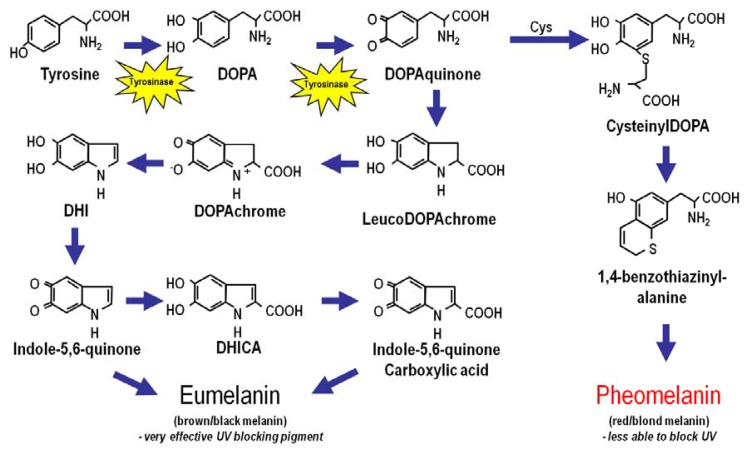Figure 2.
Melanin Biosynthesis. Melanin, a large bioaggregate composed of pigmented chemical species, is found in two major forms: the brown/black highly UV-protective “eumelanin” pigment and the red/blonde UV-permeable “pheomelanin”. Both eumelanin and pheomelanin are derived from the amino acid tyrosine. Tyrosinase is the enzyme that catalyzes the rate-limiting synthetic reaction for both melanin species and when defective causes albinism. Incorporation of cysteine into pheomelanin results in the retention of sulfur into the pigment, which yields a light color to the final melanin product and may contribute to oxidative injury in the skin. The melanocyte stimulating hormone (MSH)–melanocortin 1 receptor (MC1R) signaling axis is a major determinant of the type and amount of melanin produced by melanocytes in the skin.

